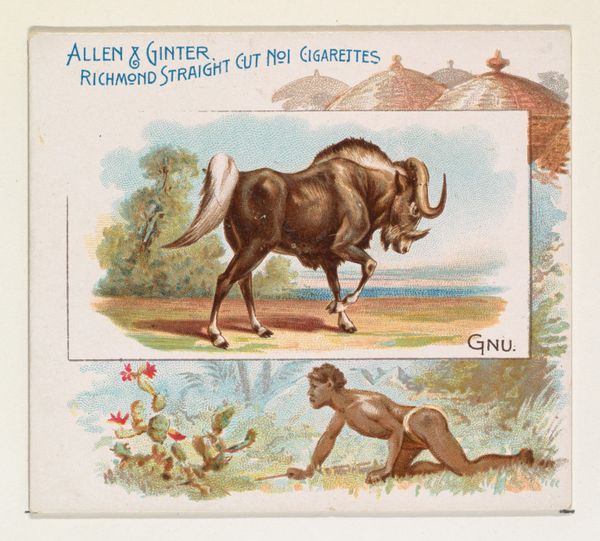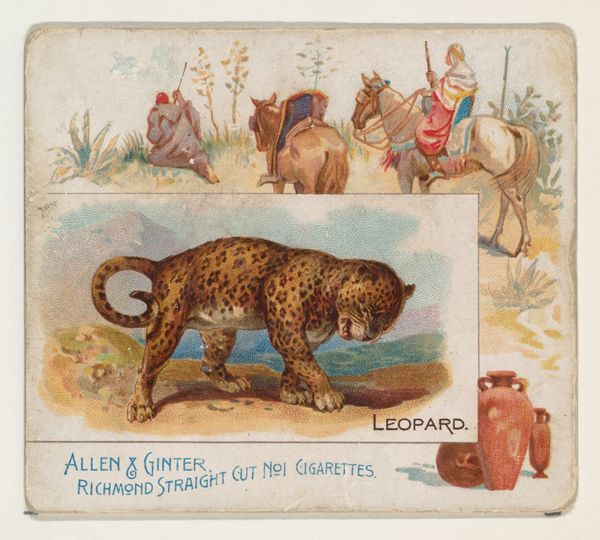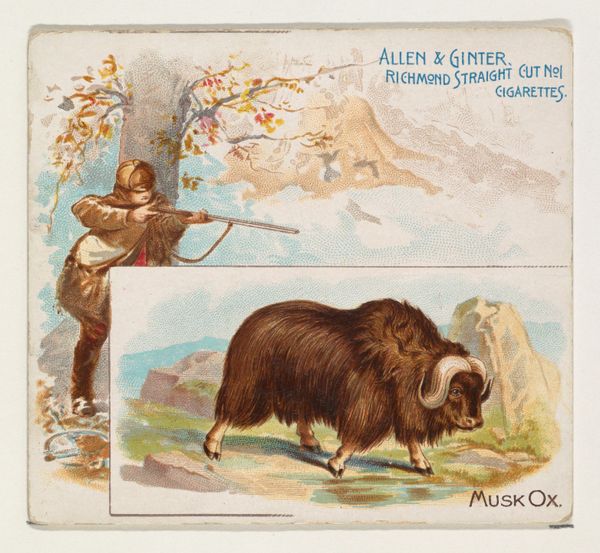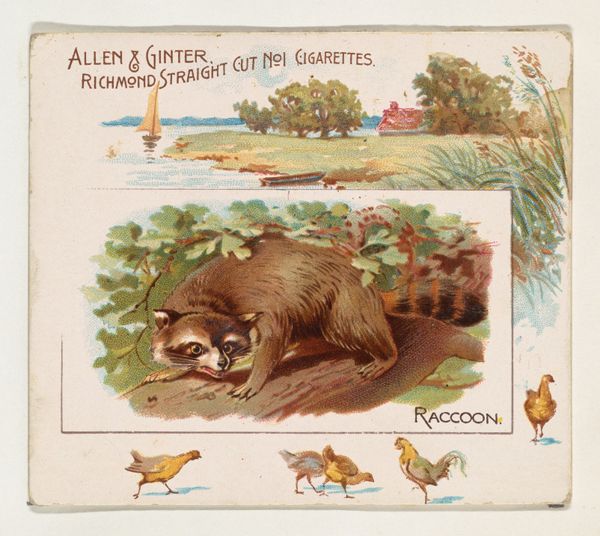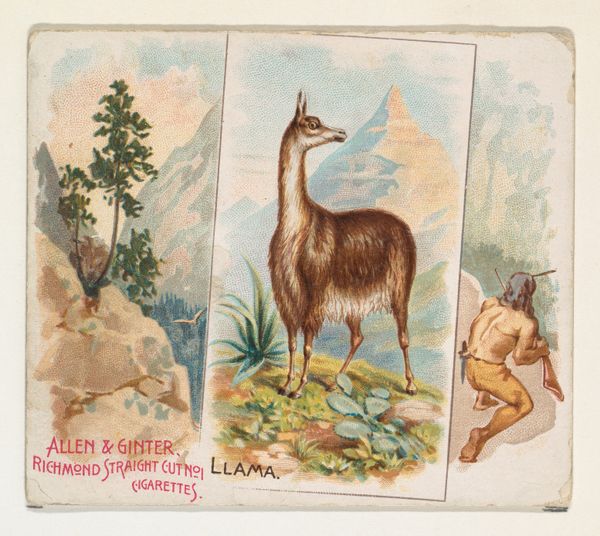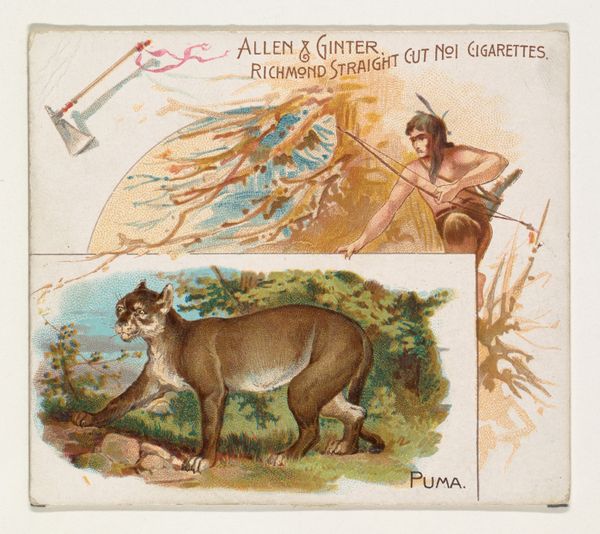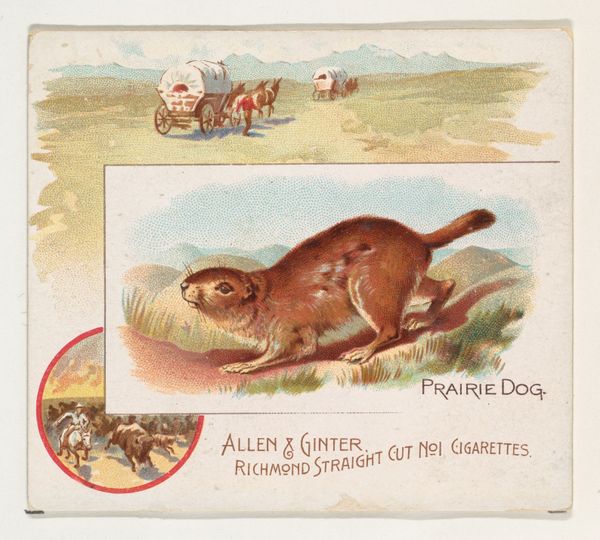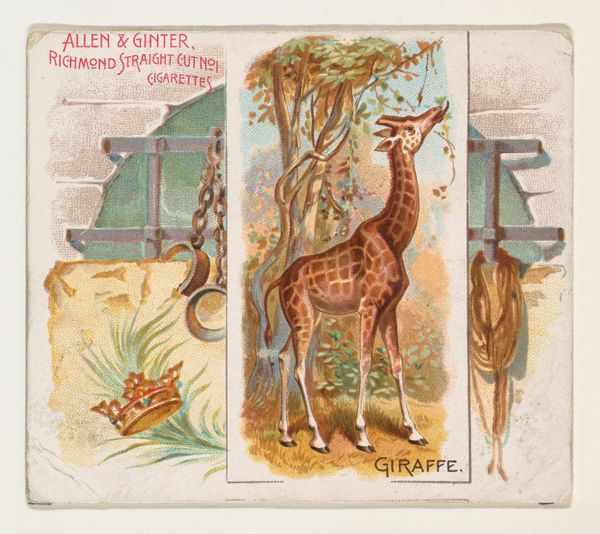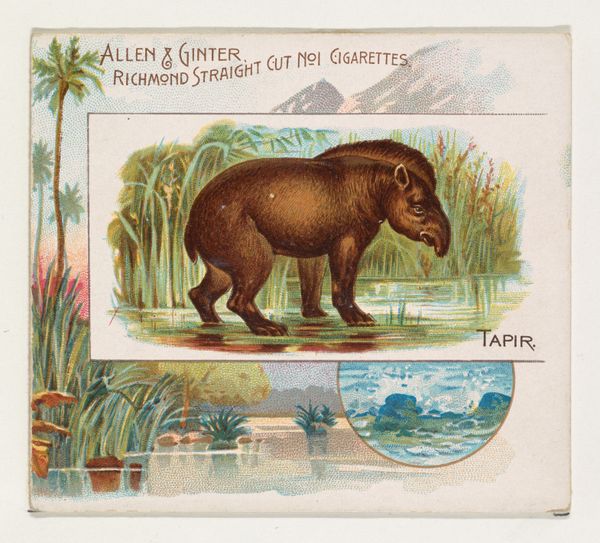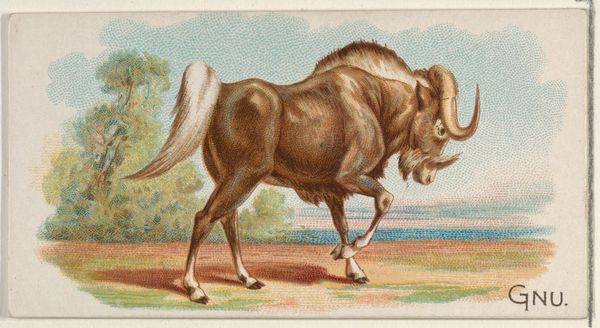
Zebu, from Quadrupeds series (N41) for Allen & Ginter Cigarettes 1890
0:00
0:00
drawing, print
#
drawing
#
animal
# print
#
landscape
#
realism
Dimensions: Sheet: 2 7/8 x 3 1/4 in. (7.3 x 8.3 cm)
Copyright: Public Domain
Editor: This is a lithograph from 1890, "Zebu, from Quadrupeds series (N41) for Allen & Ginter Cigarettes." It feels…strange, placing an exotic animal within this advertisement context. What are your thoughts on the historical implications? Curator: It’s essential to unpack the historical context. These cards, distributed with cigarettes, weren’t just innocent novelties. They reflect and reinforced a very specific worldview—one deeply rooted in colonialism and the exoticization of non-Western cultures. This image participates in the construction of the "Orient" for Western consumption, linking the "Zebu" and its cultural origin with consumer products. How might this card contribute to ideas of dominance and otherness? Editor: I hadn't considered it in that light. So, the "Zebu," becomes another object to be consumed and possessed by the West, symbolically? Curator: Precisely. The Zebu, an animal crucial to agricultural societies, is reduced to a visual commodity. Also consider the power dynamics inherent in labeling this image and categorizing the animal. Who is doing the naming, and for what purpose? We must scrutinize whose stories are being told—and whose are being erased or commodified in the process. Editor: I see now. It's not just a picture of a Zebu; it's a representation loaded with cultural and economic implications of the time. It really speaks to how commercial images reinforced specific ways of viewing the world, specifically how colonialism was ingrained in society. Curator: Exactly! It reminds us that even seemingly innocuous images can carry significant ideological weight and shape our understanding of the world. Thank you for considering this, I see promise in you, young Padawan!
Comments
No comments
Be the first to comment and join the conversation on the ultimate creative platform.
